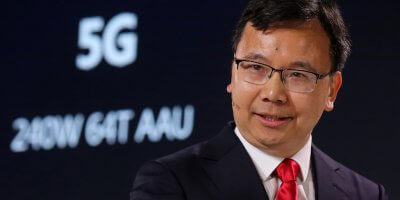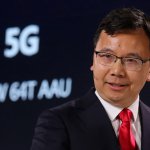
Some believe cell towers will send mankind to its doom. Source: Shutterstock.
5G did not cause COVID-19 – three 5G myths debunked
When the COVID-19 pandemic first broke out, China’s 5G progress was at its peak.
The country was dominating the 5G arena; not only had it started mass-deploying the technology, it was also offering services on a commercial scale.
The timing here led to some interesting conspiracy theories – one of the most outlandish was that 5G had a causal effect on the outbreak. In fact, contrary to many rumours circulating online, thorough scientific research has found 5G has no detrimental effects on health at all.
Perhaps then, the time is right to bust some of the more pervasive myths around the next-gen cellular networking technology, as its presence in our daily lives is just a matter of time.
# 1 | 5G is dangerous
As with all other cellular technologies, 5G relies on radio waves to carry signals from a mast to a phone. It does so at a higher frequency (and shorter wavelength) to enable more connections at a faster speed.
Some believe that this poses health risks, and attribute an odd range of maladies such as cancer and even Alzheimer’s to the technology. The reality is that the chances of getting cancer from 5G exposure is just as high as with 4G, 3G or even 2G.
While it is true that the WHO has classified all radio frequency radiation as ‘possibly carcinogenic’, it is also noteworthy that eating pickled vegetables is classed under the same category. 5G waves are also not ionizing, and will not be able to cellular damage or break DNA apart.
# 2 | 5G will wipe out 4G
Prior to 5G, a hard switchover was required for each generation change (2G to 3G, 3G to 4G). New infrastructure equipment and devices were required to support the upgraded network – but this is not the case with 5G, at least not yet.
5G networks are currently implemented as a non-standalone (NSA). Because implementing full 5G standalones (SA) is time-consuming and expensive, NSA serves as a transitional standard from 4G to 5G SA.
NSAs can be thought of as a hybrid of 4G and 5G technology. When calls or connections are attempted on 5G devices, it will first be managed by core 4G networks, then switched back to 5G.
At this rate, it looks like 4G will not be eliminated any time soon.
# 3 | 5G is only about making smartphones faster
Speed and bandwidth aside, 5G’s near-zero latency is a game-changer.
Low latency means data transfer can be done in near real-time. With this, it can support the usage of technologies such as IoT, AI and RPA on a large scale. From medicine to manufacturing and retail, 5G opens up endless possibilities for innovation, and industries will be fundamentally transformed.
5G will not come in the distant future, it is already here. It will, quite literally, change the world.
The volume of myths and rumors in circulation around 5G are testament to just how much anticipation has built around the technology among consumers and business.
As exciting as the technology is – and as transformational its potential – we must take caution in our speculation and not jump to conclusions. Our questions will all be answered soon enough, after all.
READ MORE
- Strategies for Democratizing GenAI
- The criticality of endpoint management in cybersecurity and operations
- Ethical AI: The renewed importance of safeguarding data and customer privacy in Generative AI applications
- How Japan balances AI-driven opportunities with cybersecurity needs
- Deploying SASE: Benchmarking your approach


